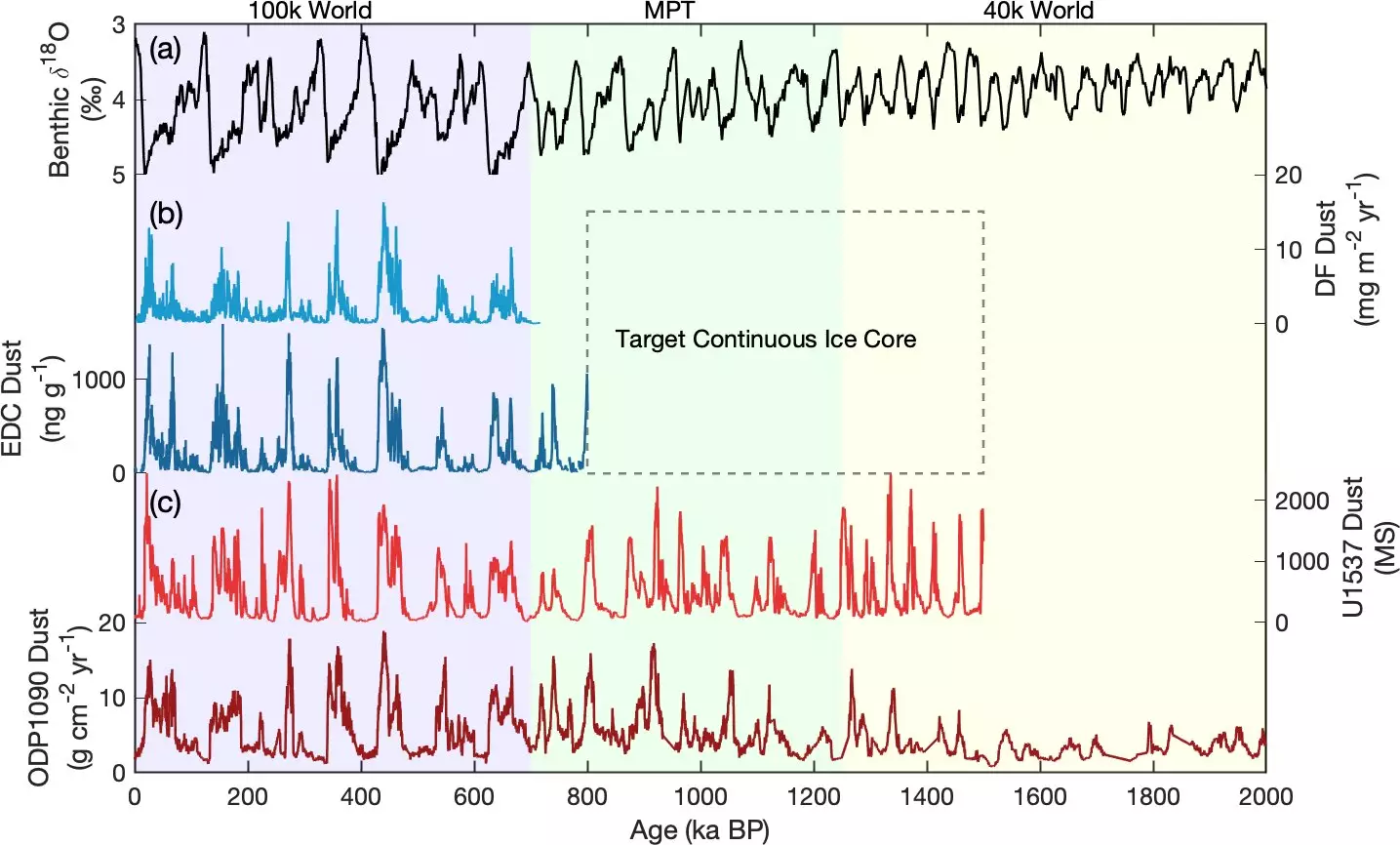Earth’s climate has been in a constant state of flux, witnessing transformations that not only shape the environment but also have far-reaching implications for life on the planet. An essential tool in deciphering these profound shifts is the study of ice cores, which serve as archives of historical climate data. These cylindrical samples, derived from ice sheets and glaciers, encapsulate not just frozen water but also a multitude of geochemical indicators, dust particles, and gases that provide a window into the atmospheric conditions of thousands—if not millions—of years ago.
Ice cores can effectively delineate periods of glaciation and interglacial warmth, with particular interest in the concentrations of dust and other geological components. High dust content often correlates with times of increased aridity, reduced precipitation, and the exposure of continental shelves, all factors that facilitate greater dust dispersion. This relationship offers a way to gauge the climatic transitions that have occurred throughout Earth’s vast history.
Currently, the oldest continuous ice record we possess, the Epica Dome C ice core, stretches back 800,000 years. However, an ambitious project is underway to expand our knowledge back even further to 1.5 million years through international collaboration aimed at extracting older ice samples. This goal is driven by the need to trace the periodic climatic cycles that dictate our planet’s weather and ecological adaptations, notably the glacial and interglacial oscillations every ~41,000 years before 1.2 million years ago. This timeline shifted to irregular patterns from 700,000 to 1.2 million years ago, culminating in more consistent cycles every 100,000 years thereafter.
Unraveling these patterns is far from straightforward. The movement of glaciers and various geological disturbances can compromise the integrity of the ice records, while melting at the base can erase vital information. To mitigate these challenges, researchers must conduct extensive surveys to locate the best potential ice-drilling sites.
Recent studies published in *Climate of the Past* have pointed to the International Ocean Discovery Program Site U1537, located near South America, as a promising candidate for capturing the elusive Oldest Ice. Led by Dr. Jessica Ng from the Scripps Institution of Oceanography, several comparisons were made between the marine dust samples retrieved from Site U1537 and those gathered from Site 1090 in the southern Atlantic Ocean. This comparison laid the groundwork for establishing an age correlation between marine dust and the ice dust from Epica Dome C.
By generating simulated Oldest Ice records, the research team utilized these models to create parallels with the marine dust records. These findings suggested that while the dust content matched between the two sites up to 800,000 years ago, the divergence in their correlation thereafter may indicate a variability in dust deposition levels across the southern hemisphere during climatic fluctuations.
Understanding the mid-Pleistocene transition emerges as a crucial objective of this research. The transition reflects a significant change in Earth’s climatic rhythms, characterized by the dynamics of glacial and interglacial epochs. Previous studies have identified factors like the erosion of regolith and tectonic activity as possible catalysts for these changes. Still, the current investigation acknowledges a need for further exploration to pinpoint the precise mechanisms that induced such significant climatic shifts.
The implications of this ongoing research are profound. The differentiation between climatic signals over 40,000-year and 100,000-year cycles ultimately influences our comprehension of Earth’s climate systems and their responses to external stimuli. As we increasingly grapple with contemporary climate challenges, understanding the historical context of these shifts is pivotal in crafting effective responses to the evolving environmental conditions we face today.
The study of ice cores offers a powerful glimpse into Earth’s climatic history. It is through these ancient records, enriched with information about dust and temperature fluctuations over millions of years, that we can begin to decode the complexities of our planet’s climate and its likely trajectory in the face of human-induced changes.


Leave a Reply